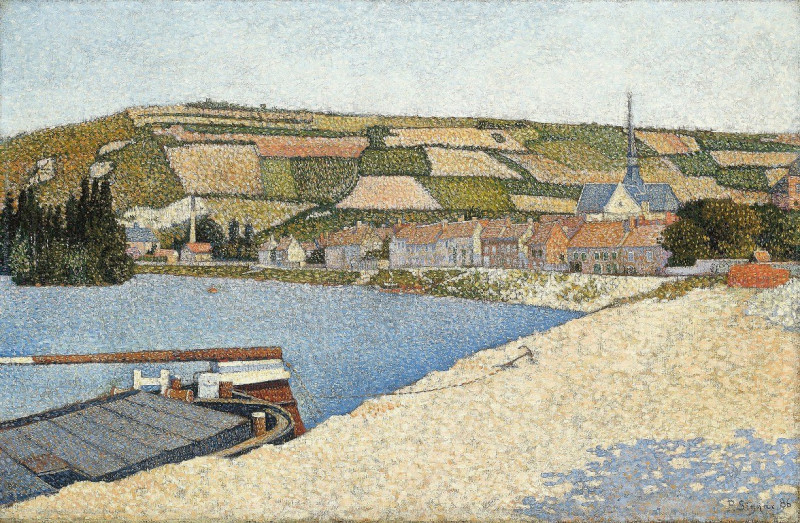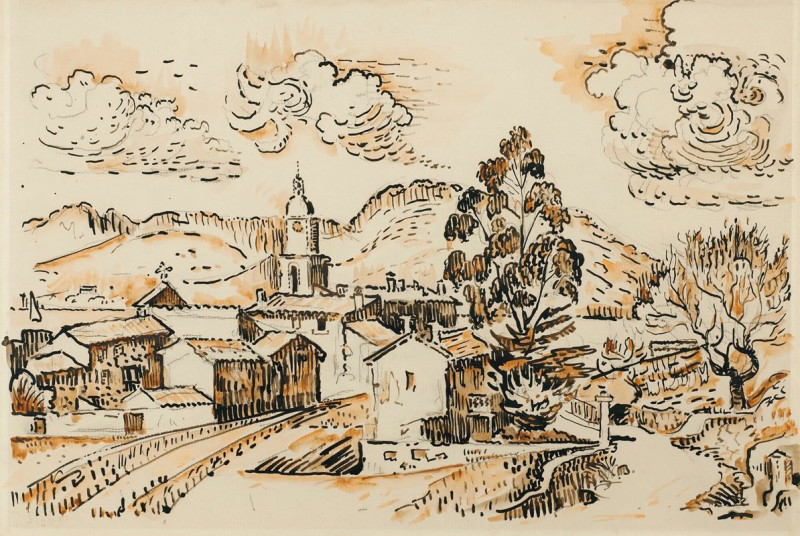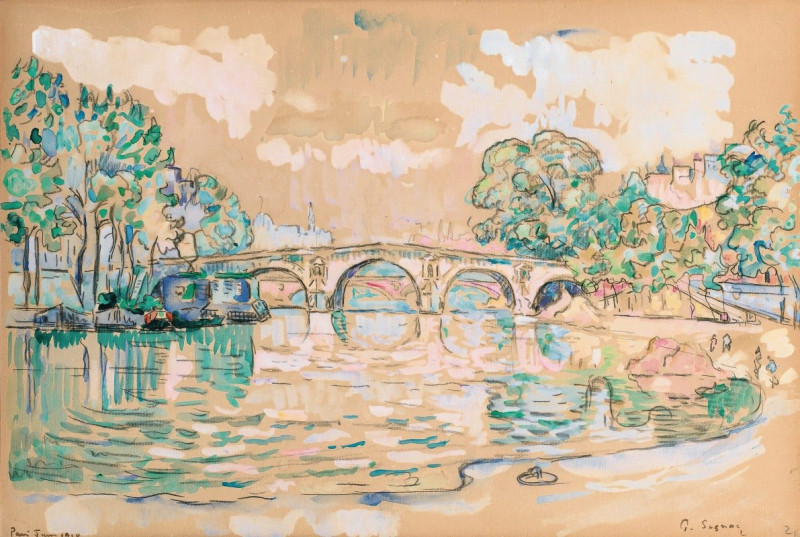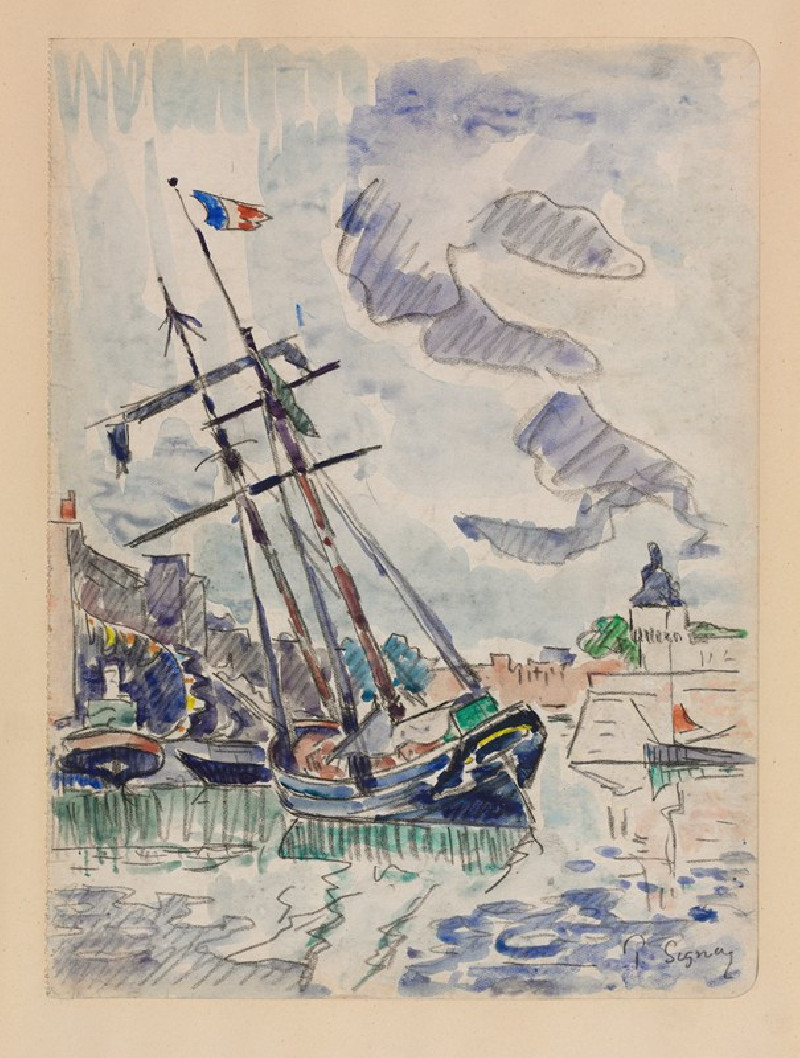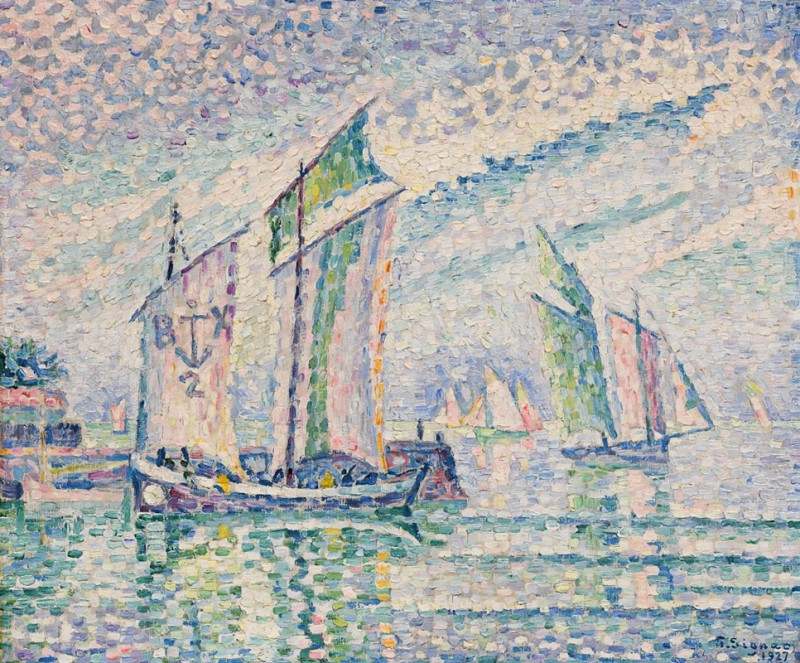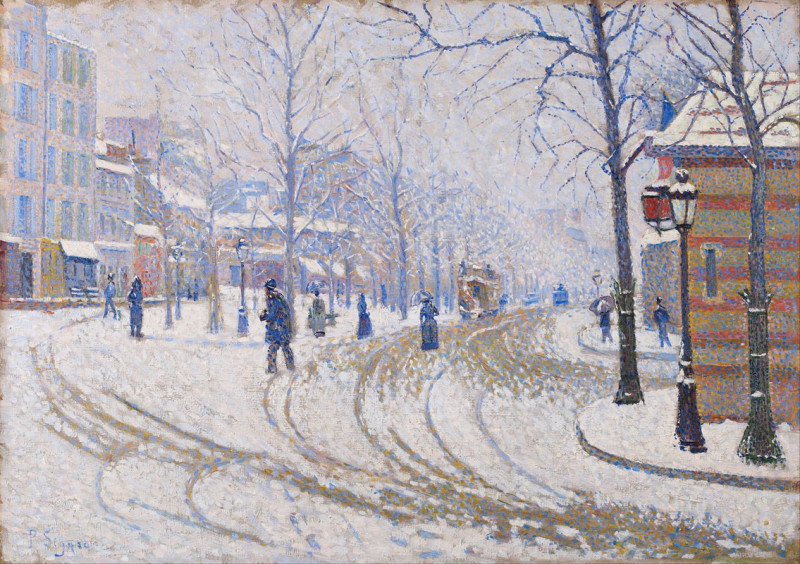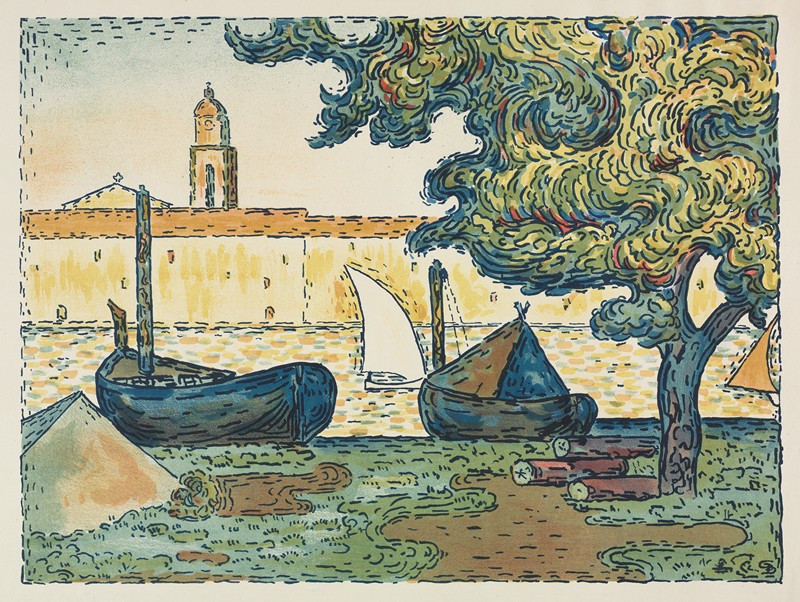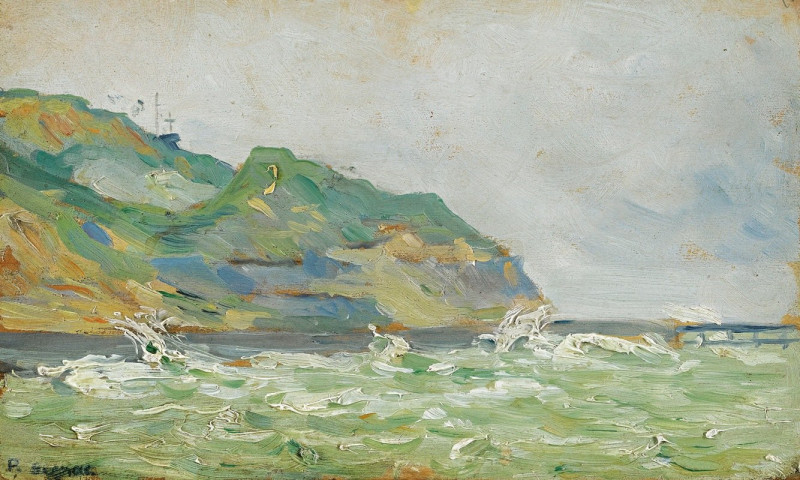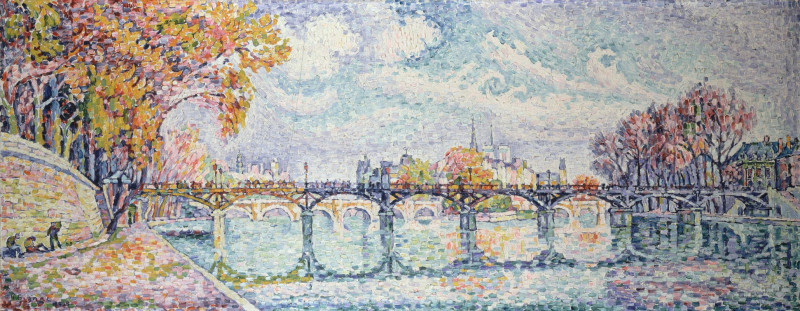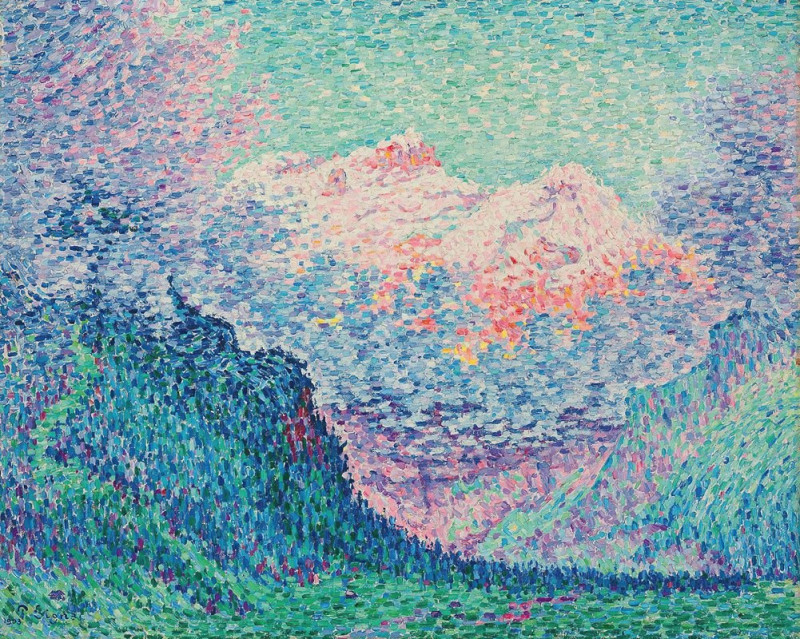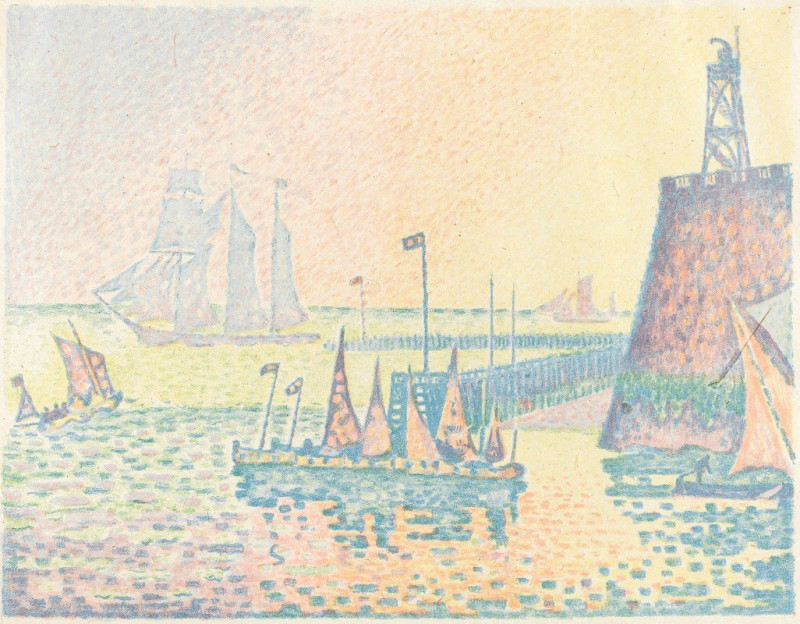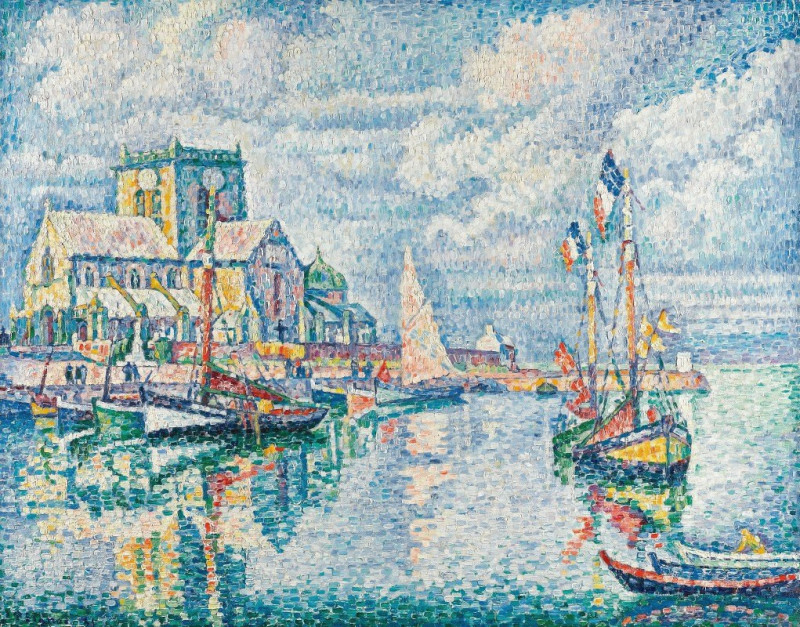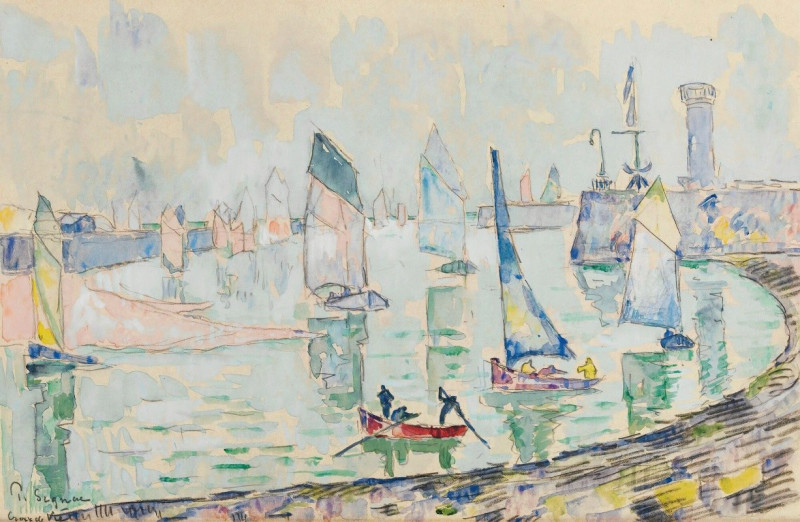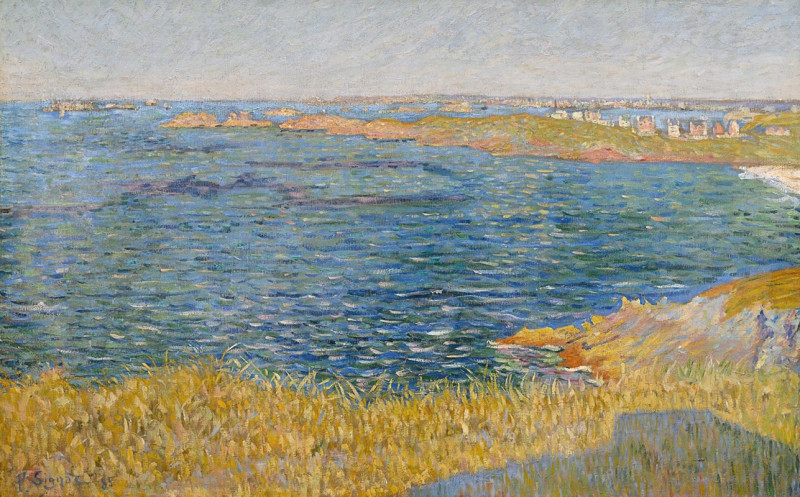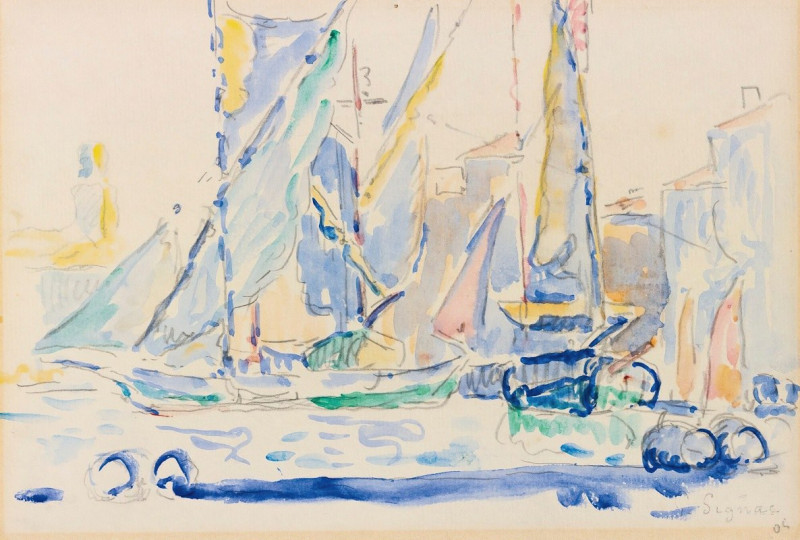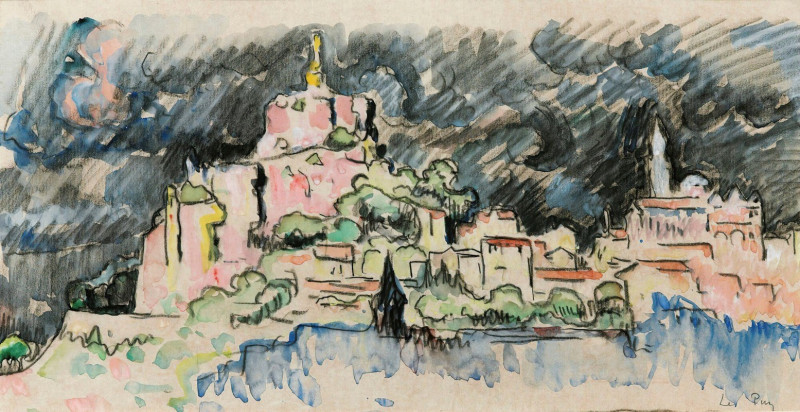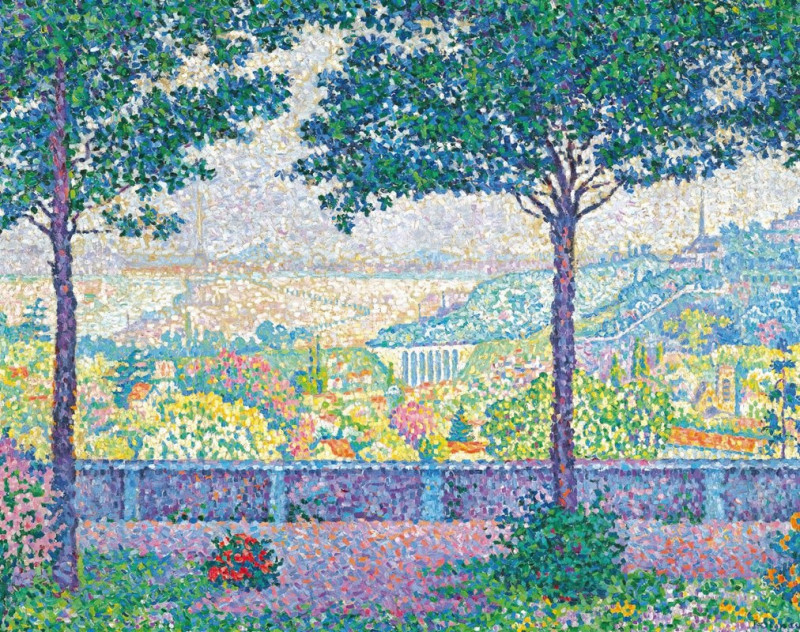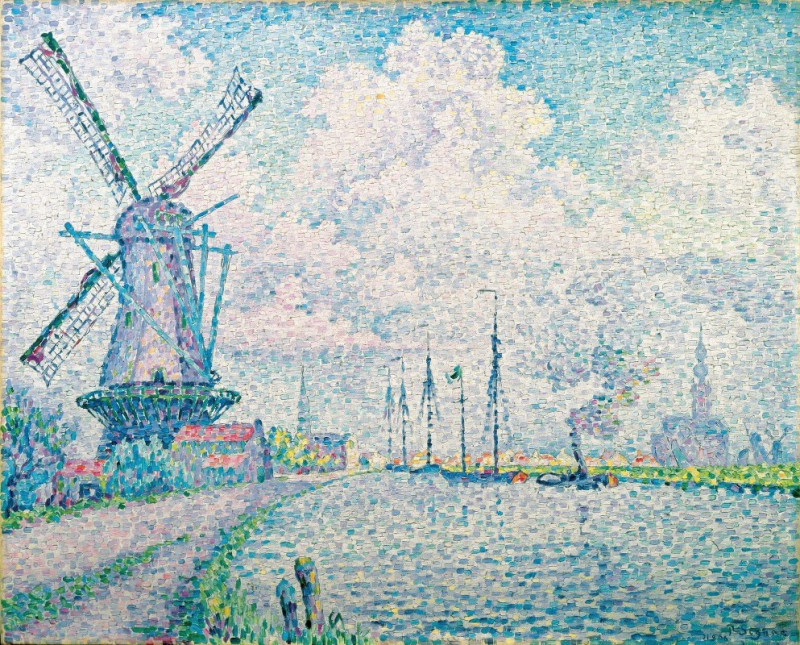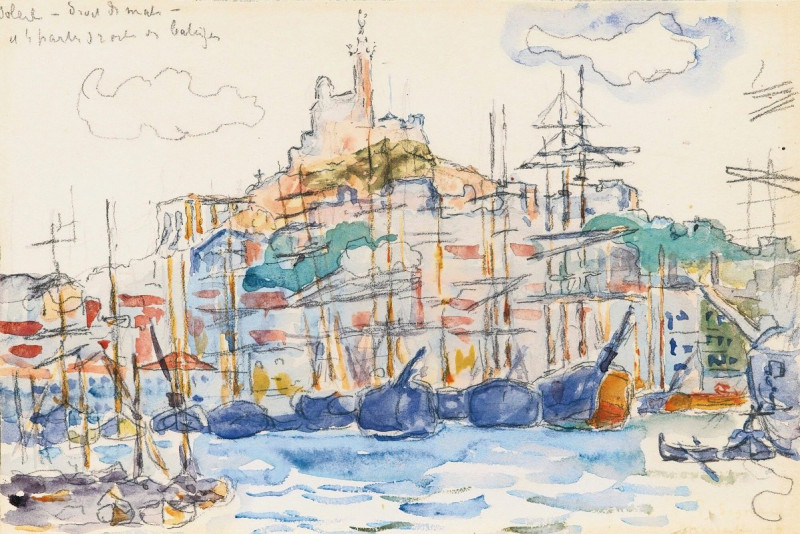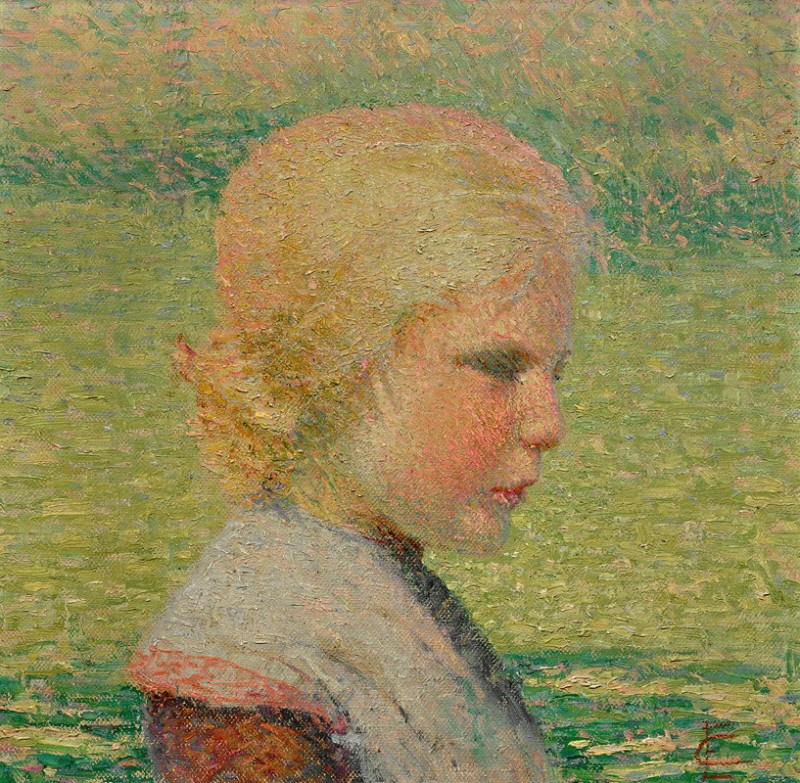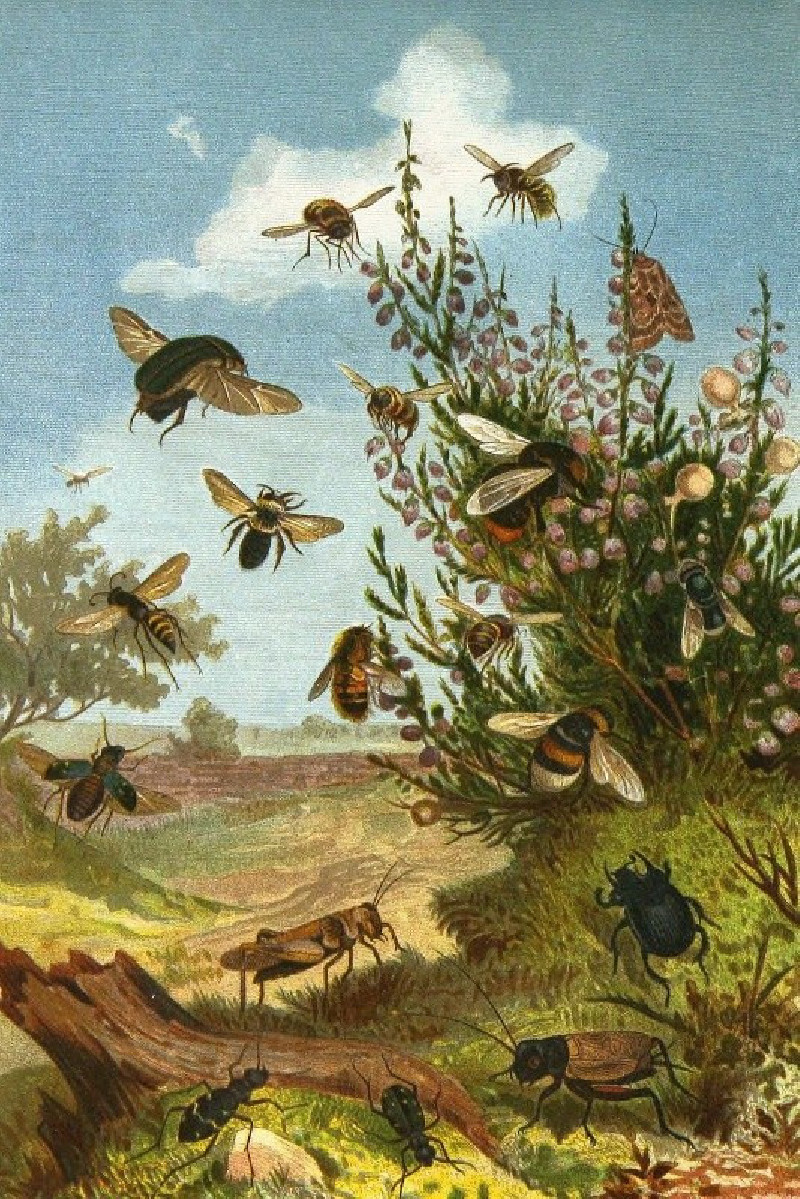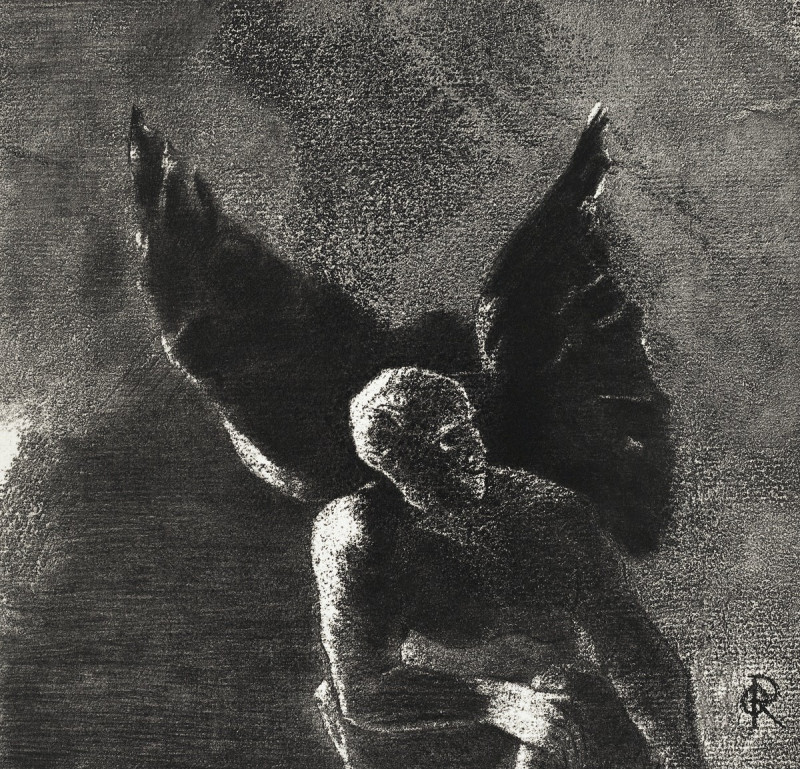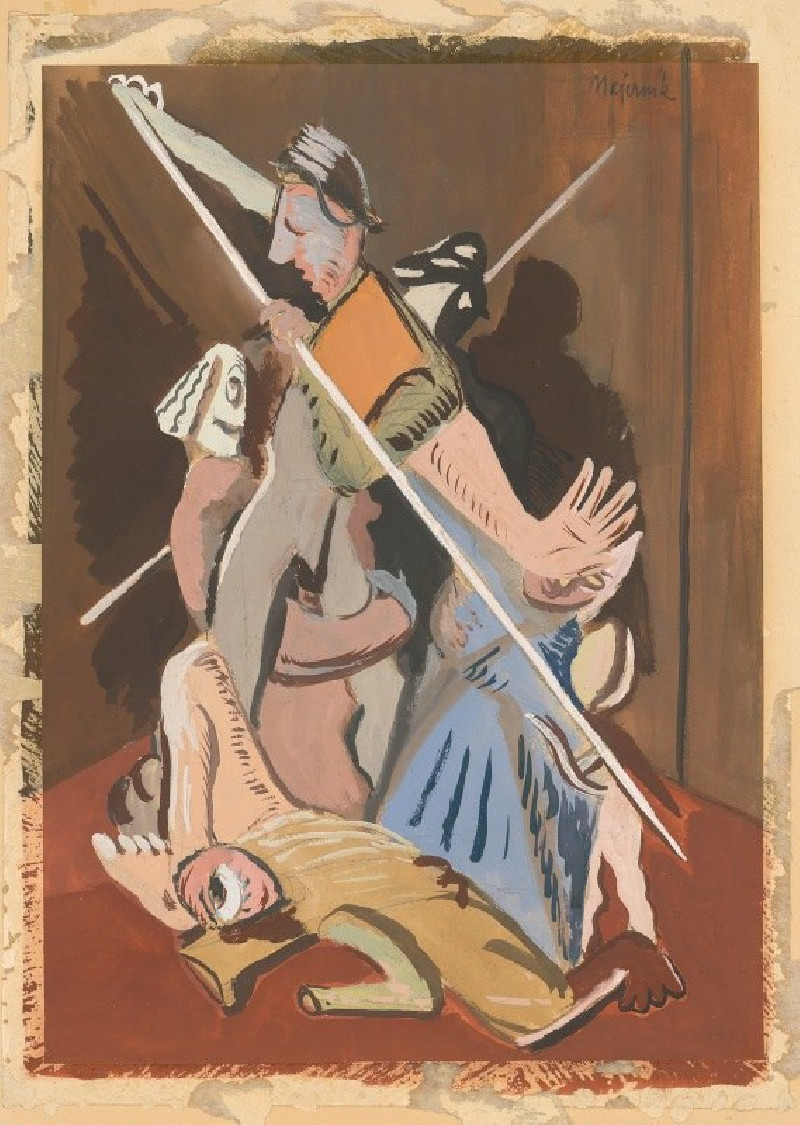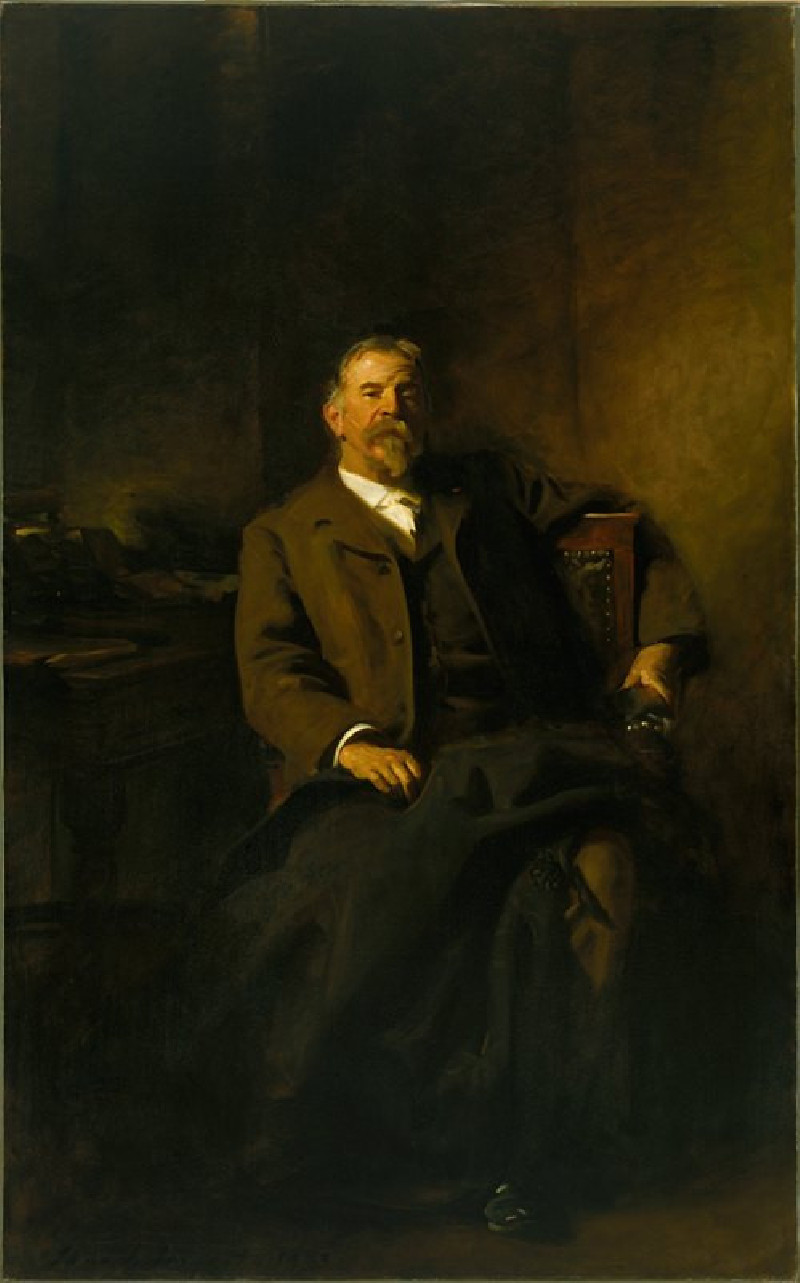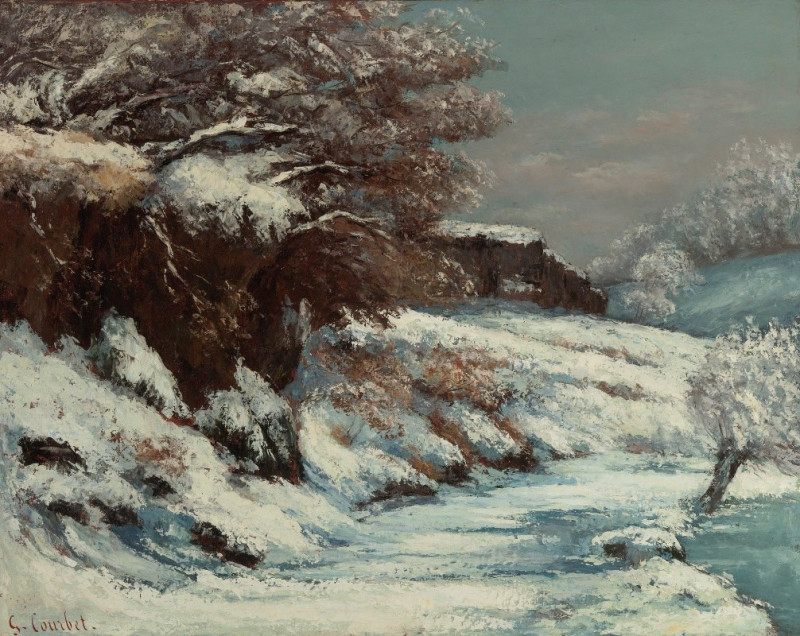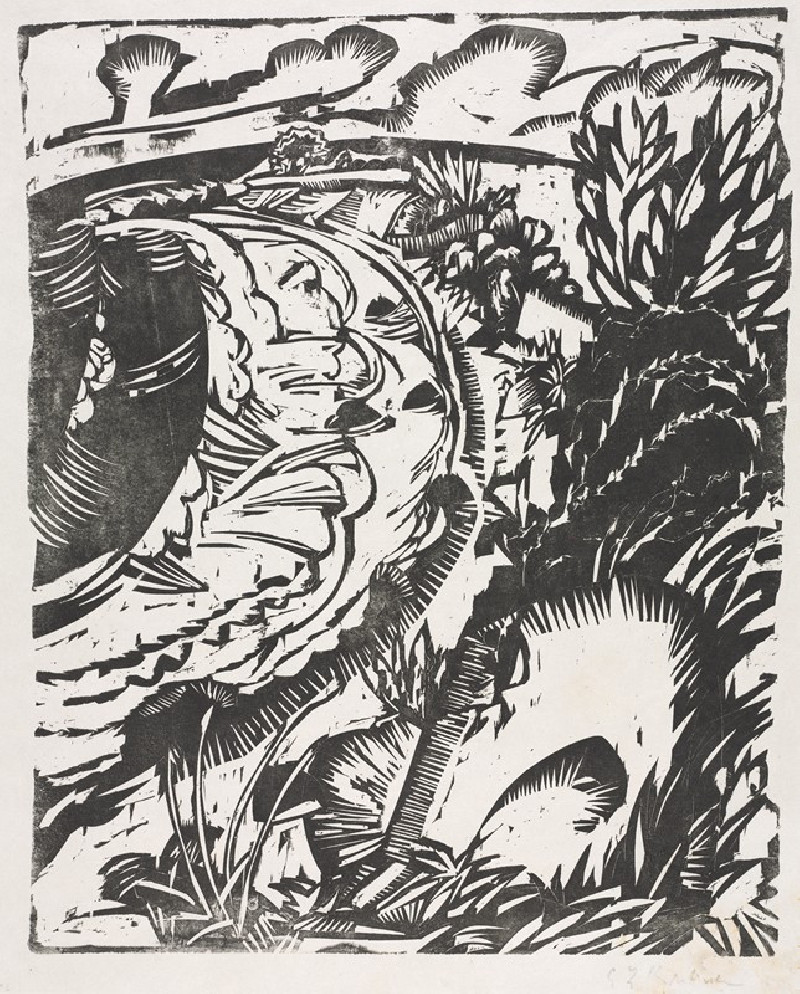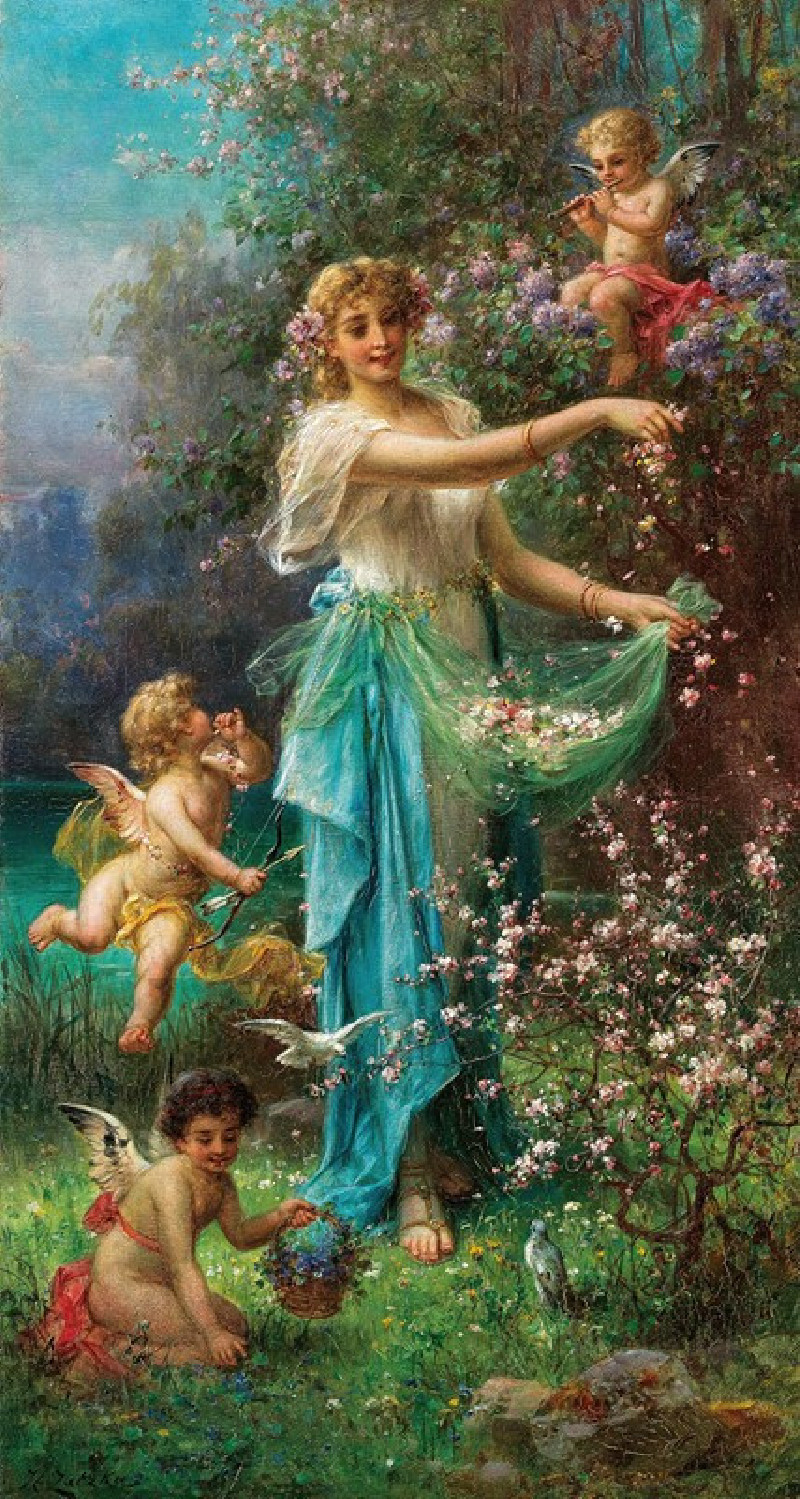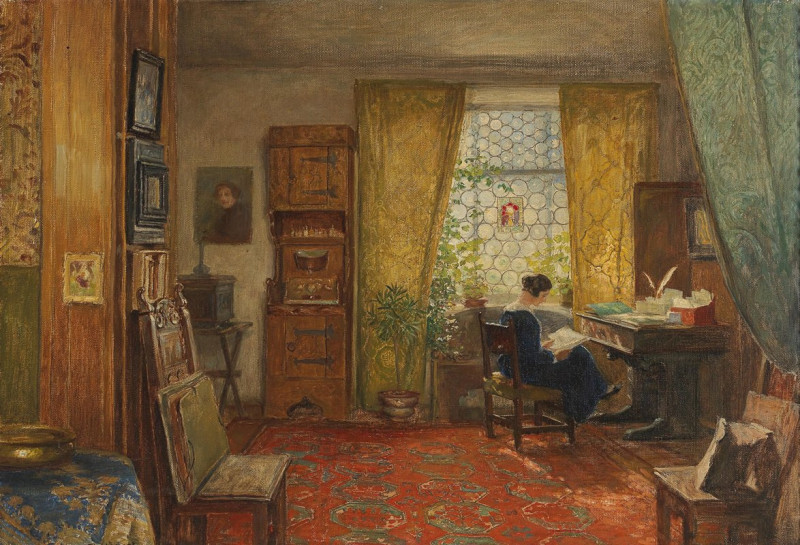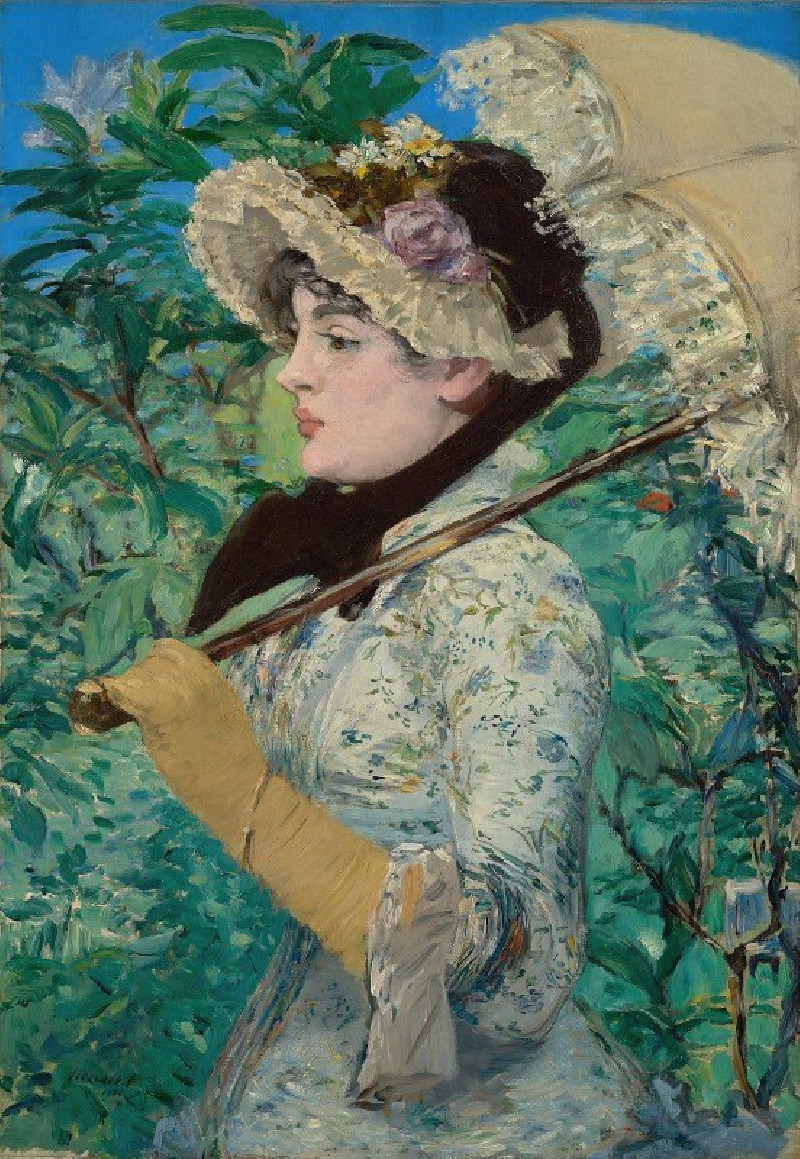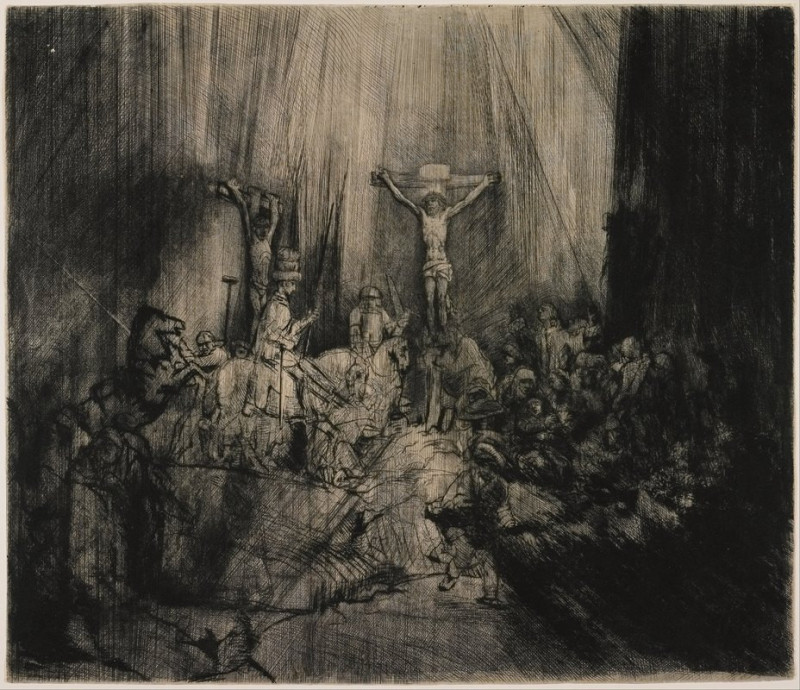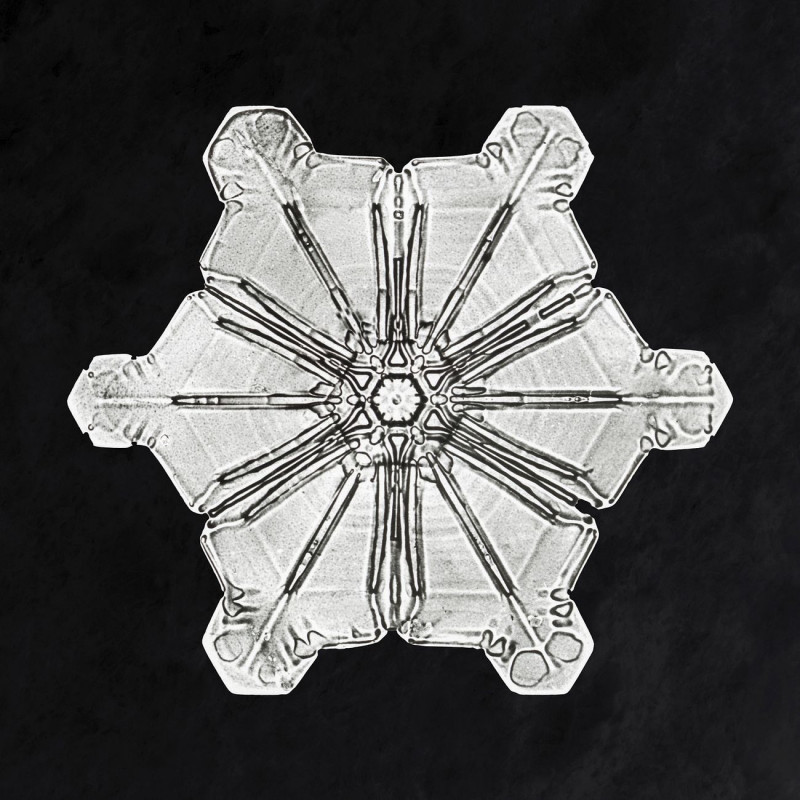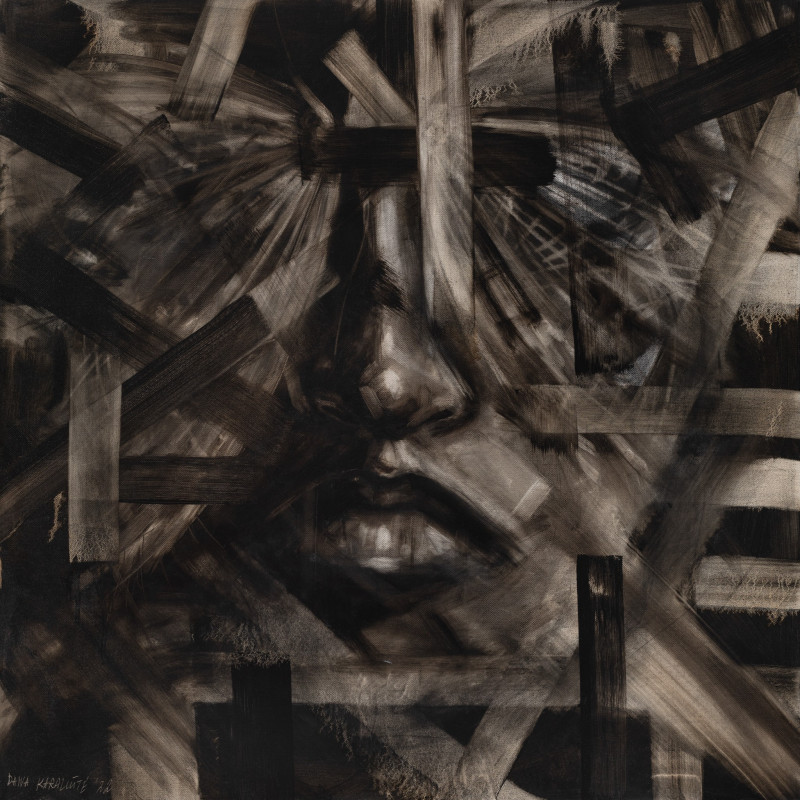Les Andelys, Côte d’Aval (1886)
Technique: Giclée quality print
Recommended by our customers
More about this artwork
This exquisite painting, "Les Andelys, Côte d’Aval," crafted in 1886 by French neo-impressionist artist Paul Signac, offers a vivid portrayal of the serene landscape in Les Andelys, a charming town along the banks of the River Seine in France. Signac, known for his pioneering role in the development of Pointillism alongside Georges Seurat, embraces this technique to capture the essence and tranquility of the riverside scene.The composition invites viewers into a vibrant, pastoral world seen through a mosaic of countless colored dots that radiate under the sunlight. Dominating the foreground is a large, grounded boat, its detailed texture meticulously rendered through precise, tiny strokes. This element contrasts beautifully with the fluidity of the water and the softness of the sandy shore that curves into the frame.The viewer's gaze is then led across the blue shimmering water to a tableau of quaint houses in gentle pastel hues. A striking feature of the landscape is the church, with its spire ascending into the bright sky, acting as a focal point that anchors the scene. Behind the village, rolling hills painted in a patchwork of greens, yellows, and browns stretch into the distance, suggesting the rich tapestry of agricultural land.The deliberate application of color and the rhythmic placement of brushstrokes not only create a vibrant optical effect but also convey a sense of harmony and peacefulness.
Delivery
Returns
Paul Signac (1863-1935) was a French Neo-Impressionist painter. Together with Georges Seurat, Signac developed the Pointillism style. He was a passionate sailor, bringing back watercolor sketches of ports and nature from his travels, then turning them into large studio canvases with mosaic-like squares of color. He abandoned the short brushstrokes and intuitive dabs of color of the impressionists for a more exact scientific approach to applying dots with the intention to combine and blend not on the canvas, but in the viewer's eye.

